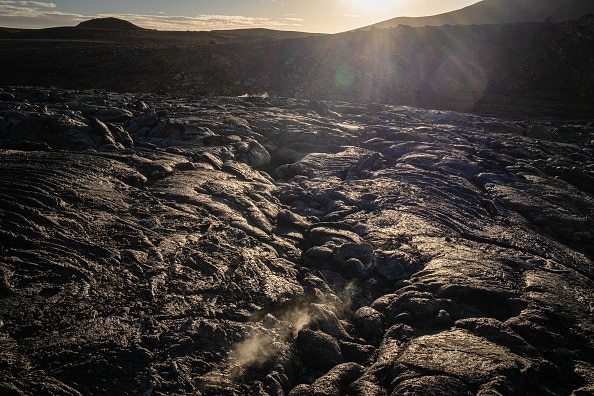An Icelandic hamlet of around 4,000 inhabitants near the capital Reykjavik might be severely destroyed by a volcano that is predicted to explode within hours or days, according to experts, news agency AFP reported. Grindavik, on Iceland's south-western coast, was evacuated in the early hours of Saturday after magma sliding beneath the Earth's crust generated hundreds of tremors, thought to be a forerunner to an eruption.
“We are really concerned about all the houses and the infrastructure in the area,” Vidir Reynisson, head of Iceland’s Civil Protection and Emergency Management was quoted by AFP in its report.
The town, which is approximately 40 kilometres (25 miles) southwest of Reykjavik, is near the Svartsengi geothermal plant, which supplies energy and water to the Reykjanes peninsula's 30,000 population, as well as a freshwater reservoir.
Grindavik is also close to the Blue Lagoon geothermal spa resort, a renowned tourist attraction that shuttered earlier this week as a precaution.
“The magma is now at a very shallow depth, so we’re expecting an eruption within a couple of hours at the shortest, but at least within a couple of days,” Reynisson said.
A fissure opening in the earth near Grindavik is the most likely scenario.
“We have a fissure that’s about 15 kilometres long, and anywhere on that fissure we can see that an eruption could happen,” Reynisson said.
He did not, however, rule out the prospect of an eruption on the ocean floor, which would very certainly result in a big ash cloud.
“It’s not the most likely scenario, but we can’t rule it out because the end of the … fissure goes into the sea,” he said.
The magma intrusion's quakes and ground rise have already damaged roads and houses in Grindavik and its surrounds.
A big fracture also ripped up the greens at the Grindavik golf course, which was extensively shared on social media.
Iceland has declared a state of emergency and ordered the obligatory evacuation of Grindavik beginning early Saturday.
Several adjacent towns have created emergency shelters and support centres, although most Grindavik people are staying with friends or family, according to media reports.
While the Icelandic Met Office (IMO) has been seeing magma gathering beneath the Earth's surface at a depth of around five kilometres for many days, it announced late Friday that the magma had begun rising vertically in a dyke.
“This magmatic dyke has been shallowing and the top depth has now been assessed to be 800 metres under the surface,” IMO’s volcanic hazards coordinator Sara Barsotti told AFP late Saturday.
She stated that specialists were taken aback by the volume of lava and the rate at which it was collecting.
“What we are seeing now is an unprecedented event. We are talking about velocities for this process and volumes or inflow rates that are much higher than what we have seen on the peninsula so far.”
In recent years, three eruptions have occurred near the Fagradalsfjall volcano on the Reykjanes peninsula: in March 2021, August 2022, and July 2023, all distant from infrastructure or populous areas.
The eruptions have shattered the Earth's crust "so much over the last three years," according to Barsotti, "helping magmatic fluids find their path faster."
The Reykjanes peninsula had been quiescent for eight millennia prior to the March 2021 eruption.
According to volcanologists, the new cycle of increasing activity might span several decades or millennia.
Iceland is located in the North Atlantic, straddling the mid-Atlantic Ridge, a rift in the ocean floor that separates the Eurasian and North American tectonic plates.
In April 2010, a large eruption of another Iceland volcano, Eyjafjallajökull, in the south of the island, prompted the cancellation of 100,000 flights, stranding more than 10 million people.


